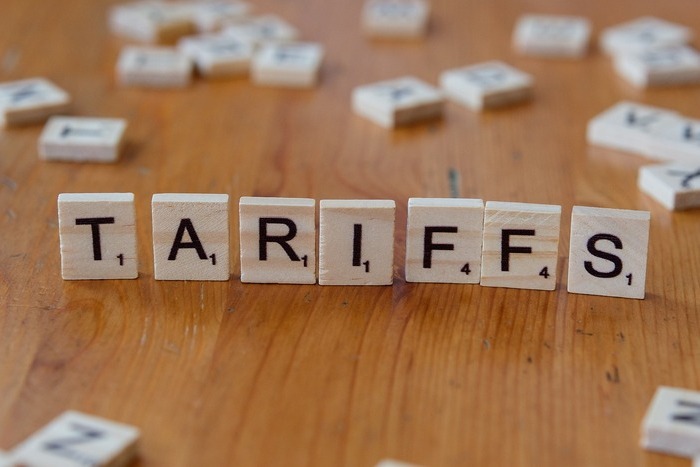American President Donald Trump doubled tariffs to 50% on India. After the new tariffs, India has been “a bit recalcitrant” in trade negotiations with Washington, US Treasury Secretary Scott Bessent said on Tuesday, The Indian Express reported. India called the US move “unjustified and unreasonable.” The new tariffs were seen as a “punishment” for the country buying Russian oil, the New York Times reported. The newspaper said: “Under a new executive order, India would face a 25% tariff starting on 27 August if it continues to buy oil from Russia. That would be in addition to a 25% duty that Trump announced last week, citing unfair trade barriers, which he plans to implement beginning Thursday.”
India’s foreign ministry responded to Trump’s announcement, “reiterating that its motives for importing oil from Russia were tied to the energy needs of its 1.4 billion people”. The government’s statement said:“It is, therefore, extremely unfortunate that the US should choose to impose additional tariffs on India for actions that several other countries are also taking in their own national interest.”
TOI reported that the European Union has bought more Russian energy than India since the start of war in Ukraine.
Lok Sabha passes Mines and Minerals Amendment Bill
The Lok Sabha passed the key amendments to the Mines and Minerals (Development & Regulation) Act, HT reported. This broadens the scope and territorial domain of the National Mineral Exploration Trust (NMET) to enable use of the funds accrued to the Trust within India and outside India for the purposes of exploration and development of mines and minerals, the newspaper explained, citing ministry officials.
The bill renamed the NMET as the National Mineral Exploration and Development Trust to reflect its enlarged scope and increase the amount of payment to the Trust by the lessees from present 2% of the royalty payable to 3%, the outlet said.
130 hectares tribal land to be diverted for Nicobar road project
The government told Parliament 130 hectares (ha) falling within a tribal reserve will be diverted for the Great Nicobar Trunk Infrastructure Road project. Overall, an area of 238.76 ha is proposed to be diverted for the arterial road, which includes 39.23 ha of government revenue land, 39.86 ha of private land, 10.62 ha of deemed forest, and 149.05 ha of protected forest. The area falling within the tribal reserve is 130.4 ha, reported HT. citing government statement.
The Trunk Infrastructure Road will cut through Great Nicobar Island (GNI) and connect all villages on it. The government said the estimated number of trees to be felled in the first phase of the construction of the arterial road is 12,428.
The outlet pointed out that the draft, published on A&N administration’s Directorate of Social Welfare website, said tribal populations of Shompen and Nicobarese have agreed to the land diversion. Anthropologists, the newspaper said, have cautioned against the social impact of the road project especially on the tribes.
The Great Nicobar Holistic Development Projects include an international container transshipment terminal (ICCT); an international airport; a power plant; and a township. The total cost is estimated at ₹81,800 crore. The Nicobar Islands fall in the Sundaland Biodiversity Hotspot and cover the western half of the Indonesian archipelago, the newspaper reported.
Indigenous people protest dam over Siang River, call for talks
The Siang Indigenous Farmer’s Forum from Arunachal Pradesh alleged that the proposed 11,300 MW Siang Upper Multipurpose Project — its pre-feasibility report (PFR) surveys and pre-construction activities and other outreach activities are being conducted “by force” without the consent of the affected indigenous communities, reported HT.
The outlet quoted the farmers’ statement, that said: “massive and irreversible ecological damage was also highlighted about the project which would cause destruction of biodiversity-hotspots, leading to loss of indigenous medicinal plants and endemic flora and fauna, cutting of old growth forests and disruption of riverine ecosystems whilst the project is proposed in seismic zone V with eminent threat of dam- triggered earthquakes/seismic activity such as erosion, flooding, etc,”
The statement added that: “GLOF (Glacier Lake Outburst Flooding) was also highlighted as an eminent threat due to climate change induced rapid glacier melting of Rivers in Arunachal, including those in Siang and Dibang rivers of India,” the statement said.
India’s climate action guided by national circumstances, MoEFCC tells Lok Sabha
The government informed Parliament that India’s climate action is guided by its own national circumstances, Nationally Determined Contribution (NDC) and the Long-Term Low Carbon Development Strategy (LT-LEDS) to achieve net-zero by 2070 and Initial Adaptation Communication, HT reported.
Explaining India’s stand on climate change negotiations in the midst of geopolitical disruptions, Union environment minister Bhupender Yadav had said to HT that India’s overarching goal of Viksit Bharat 2047 (becoming a developed country by 2047) is of paramount importance and the country’s climate actions should align with that. He had said India is formulating its first comprehensive National Adaptation Plan (NAP), a strategic initiative to enhance the country’s resilience to climate change.
About The Author
You may also like
India says it won’t rely on global climate or pollution rankings to shape policies
COP30 Kicks Off With Hard Talks on Money, Adaptation and Global South Leadership
COP30 should be the COP of adaptation, says environment minister Bhupendra Yadav
India to release updated climate plan ‘during, or just ahead’ of Brazil COP in Nov
SCO summit concludes: ‘Energy diplomacy’ of China, Russia, India

